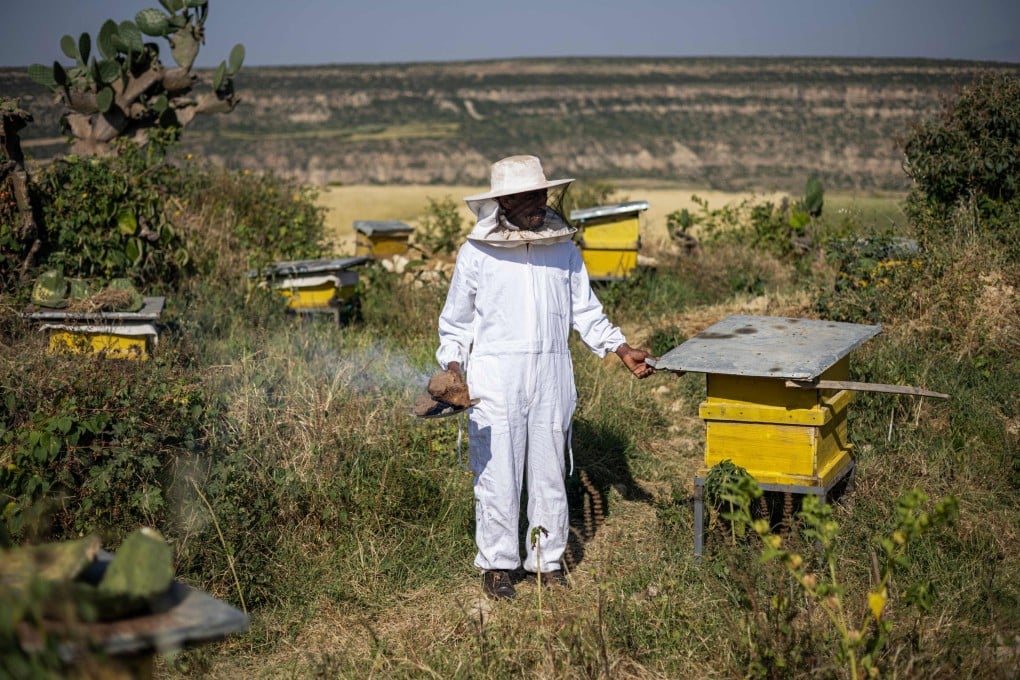Advertisement
Beekeeper in Ethiopia rebuilds after civil war, hoping to restore white honey production
Tigray in Ethiopia is famous for its creamy white honey, but civil war destroyed half its beehives. Its beekeepers are still recovering
Reading Time:2 minutes
Why you can trust SCMP

In his stone house perched on a hill in northern Ethiopia, Amanuel Hiluf puts on his protective suit, carefully adjusting the hood and gloves.
Advertisement
“We have to hurry up, it starts to be hot, and the bees will be upset,” he says.
In his garden in Hawidela, a village about an hour from Mekele, capital of the Tigray region, the beekeeper has about 40 hives from which clouds of bees are soon escaping.
For nearly 20 years, his hives have produced white honey, a creamy, highly prized variety for which the northernmost region of Ethiopia is famous.

Amanuel, 42, remembers a time when they produced “in abundance”.
Advertisement

Advertisement